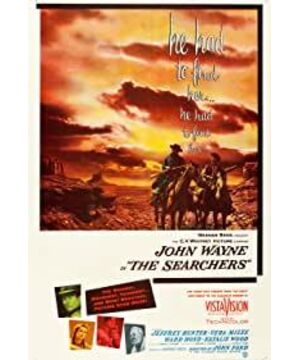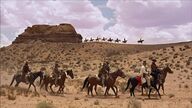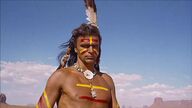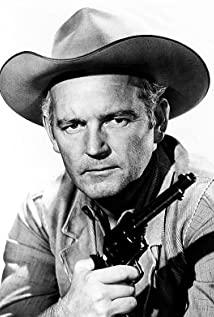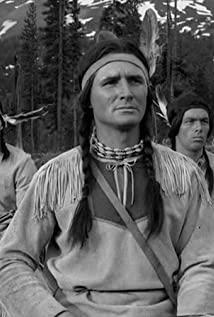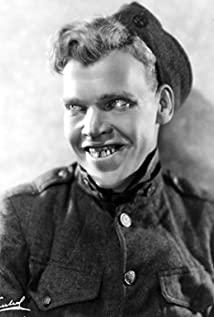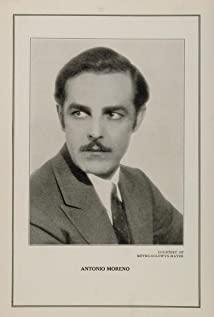This really can be regarded as the pinnacle of Western movies! I am very surprised that this film from more than 60 years ago is so sophisticated in photography, color correction, composition, and mirroring. The red and yellow light, the fast revolver, the desert dunes, the Yankees and the Indians, all these western elements are satisfied. As someone who has never seen a Western film, I should expect a Western film, and the door frame silhouette composition at the beginning and end of the film is even more famous in film history. It implies to the audience that there is always a homecoming beyond the Cowboy's life journey. The narrative method of this film is even more beyond my expectations, getting rid of the stereotyped narrative of many old movies. The smooth progression while avoiding tediousness promises to give viewers enough patience for a 2-hour western.
When it comes to the composition of the film, I have to mention the most classic door frame silhouettes at the beginning and the end: the door is used as the frame at the beginning and the end of the movie. Sen turned to leave the house, and the door closed. A door separates home from wilderness, civilisation from wildness. Heroes always try to get through this door, only to find that they can never get in. Martin's family line is also the film's sub-line beyond the Wilderness Search line, and this sub-line is the most witty and joyful part of the film.
Let's talk about the two-line interspersed in this film: one is the family line and the other is the wilderness line. When the film started the pursuit in the Texas wilderness, the director did not forget to introduce the relationship between the protagonist and the family from time to time, whether it was by sending letters or montages of home and wild scenes. What's even more wonderful is that the hero Ethan is actually an interweaving of the family and the wilderness. In fact, he is out of tune with the family view of the civilized world. Whether it is his treatment of his relative's funeral or his ambiguous relationship with his sister-in-law, he is actually Scar in White. But he also yearns to integrate into civilization, to return to his family, and to get the love of his sister-in-law. His persistent search for his niece was actually a mixture of these two emotions. One was the unstoppable urge for revenge and bloodthirsty in the wild, and the other was a deep affection for the deceased court. All of this love-hate relationship is manifested in the wilderness again.
Therefore, the value of "The Searcher" is by no means comparable to that of other traditional western films. It points out a way for the future film industry to tell stories with composition and look at society with characters.
View more about The Searchers reviews


